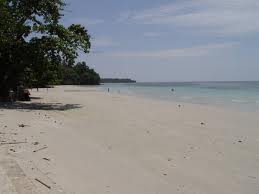Senin, 25 Oktober 2010
The Map of Amboina , Ambon Manise
Source by : Moluccas
Kamis, 21 Oktober 2010
George Everhard Rumpf, (Rumphius) Monument
George Everhard Rumpf, (Rumphius), is well known for his pioneering research of Ambonese flora and fauna. Rumphius lived most of his life in Ambon, from 1660 to 1670. He was a Germany who served in the Dutch army. He conducted his research in Hila village and lived next to Fort Amsterdam. One of his greatest works is titled Het Ambonsch Kruidboek (The biological Vegetation). The book describes scientifically in detail the vegetation in Maluku. Besides fauna and flora, Rumphius also wrote about the history of Maluku. In 1702 Rumphius passed away at his house located at the street, J now known as Jalan Pattimura. His memorial is built in SMU Xaverius complex in Ambon at Jalan Pattimura.
Martha Christina Tiahahu Monument (Historical heritage)

The independence patriot Martha Christina Tiahahu is an acknowledged as a national heroine in Indonesia. Martha Christina Tiahahu fought side by side with her father t|| repel Dutch colonialism in the archipelago. When the Dutch caught and executed her father on the tiny island of Nusalaut, south -east of Saparua, she was taken to Java by ship to work in a tea & coffee plantations. On the ship she refused any food, and mourning over her father's execution. She passed away on the 2nd of Jan. 1818, at the age of just 18. Her body was buried at sea to give her final rest.
To reach her memorial, take a minibus to Karangpanjang. From above of this memorial one has a beautiful panorama of the city, the Blue Amboina Bay, and the rugged hills of the Leihitu Peninsula.
Economy of Ambon Manise
Cassava and sago are the chief crops, which also include breadfruit, sugarcane, coffee, cocoa, pepper and cotton. and hunting and fishing supplement the diet. Nutmeg and cloves, were once the dominant export crops, and are now produced in limited quantities. Copra is also exported. Amboina wood, obtained from a local tree (Pterocarpus indicus), is highly valued for ornamental woodwork, is now mostly grown on Seram.
Climate of Ambon Manise
The average temperature is 80 F., rarely sinking below 72. Rainfall can be heavy, especially after the eastern monsoons, and the island is vulnerable to violent typhoons. The dry season (October to April) is coincident with the period of the west monsoon.
Geography of Ambon Island
Ambon Island lies off the south-west coast of the much larger Seram island. It is on the north side of the Banda Sea, part of a chain of volcanic isles that form a circle around the sea. It is 51 km (32 mi) in length, and is of very irregular shape, being almost divided into two. The south-eastern and smaller portion, a peninsula (called Leitimor) is united to the northern (Hitoe) by a narrow neck of land. Ambon city lies on the north-west of Leitimor, facing Hitoe, and has a safe harbor on Amboyna Bay.
 The highest mountains, Wawani 1,100 m (3,600 ft) and Salahutu 1,225 m (4,020 ft), have hot springs and solfataras. They are volcanoes, and the mountains of the neighboring Uliasser islands, extinct volcanoes. Granite and serpentine rocks predominate, but the shores of Amboyna Bay are of chalk, and contain stalactite caves.
The highest mountains, Wawani 1,100 m (3,600 ft) and Salahutu 1,225 m (4,020 ft), have hot springs and solfataras. They are volcanoes, and the mountains of the neighboring Uliasser islands, extinct volcanoes. Granite and serpentine rocks predominate, but the shores of Amboyna Bay are of chalk, and contain stalactite caves.Wild areas of Ambon Island are covered by tropical rainforest, part of the Seram rain forests ecoregion, together with neighboring Seram. Seram, Ambon, and most of Maluku are part of Wallacea, the group of Indonesian islands that are separated by deep water from both the Asian and Australian continents, and have never been linked to the continents by land.

As a result of this isolation, Ambon has few indigenous mammals; birds are more abundant. The insect diversity of the island, however, is rich, particularly in butterflies. Seashells are obtained in great numbers and variety. Tortoise-shell is also exported.

Langganan:
Komentar (Atom)
















































